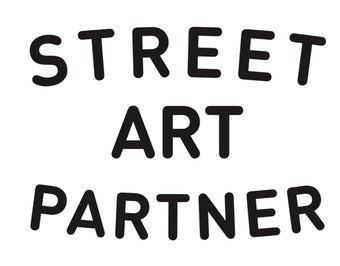Learn
Graffiti/Street Art is a wonderful form of public art that gifts your community, and everyone in it, with the ability to enjoy free art.
*You do not have to enjoy all graffiti*, in fact - as with most things - beauty is definitely in the eye of the beholder. What you like now may change and grow as you learn more, take a tour, learn about artists, participate in a graffiti workshop, or begin to do some art yourself.
Let's learn about the art form:
Tags:
Tags are one of the most commonly seen types of graffiti . When an writer writes a tag, it's know as "tagging".
Tags are often a more simplistic style, done mostly in black or single-color. They are fast and widespread, and can be completed hurriedly by the artist.
Throw-ups / Throwies:
A throw-up or throwie lives between a tag and a piece in terms of complexity and time investment. It usually consists of a 1 color outline and 1 color fill. A throwie is designed for quick execution, to avoid too much unwanted attention while the writer is working. Throwies are often used to achieve a large number of pieces of work, since they are relatively quick and can be produced in a short time.
Pieces:
A piece more complex and time consuming than the previous two terms. It often involves more than 3 colors, and can be either words or images. You can think of the types of art as classified by difficulty and time-to-produce. Once you dive deeper into pieces, you begin to blur the lines with what people will often term...
Street Art:
Street art is just that; art found on the street. It can be sculptures, glasswork, 3D prints, ceramic work, or paintings and murals. While both graffiti and street art maintain the beautiful element of providing the public with free art, and they are both often considered to be subversive art forms, street art is generally more widely accepted as a form of art.
Site-Specific:
A site-specific piece is art that is produced in a certain location that incorporates the unique elements of that specific location into the art piece itself. While traditional art is done in a studio, on a flat surface such as a canvas, street art presents a unique challenge and opportunity - varied surfaces! A site specific piece is one that is created to exist specifically in one spot, with those contours and unique challenges and opportunities, and wouldn't make sense anywhere else since it incorporates the fixed elements of the site into the artwork itself.
Street Art Partner:
While graffiti and street art have been more widely welcomed into the mainstream, most of its artists have been left out. Because much of their work is on the streets and gifted to the community as public art, they've been taken advantage of by people not awarding them the proper credit for their work. A tourist is someone who comes to a neighborhood, hears someone point at work they know little or nothing about, and goes home. A street art partner is someone who learns the truth behind the pieces, from the artists themselves, and gets brought into this exclusive world by those who know it best. Don't be an extractionary tourist. Become part of this community - enrich and support its artists, dive in, and be welcomed as an honored guest and visitor.
